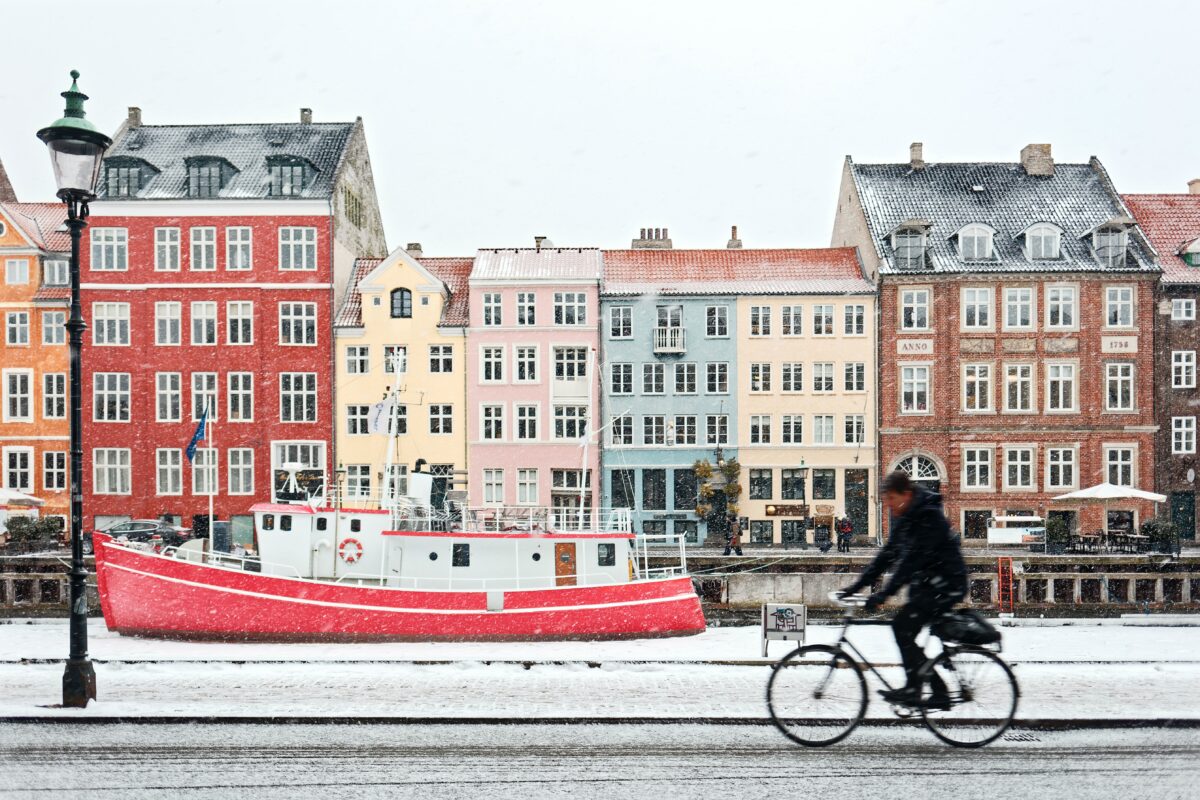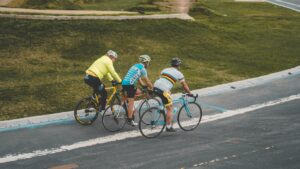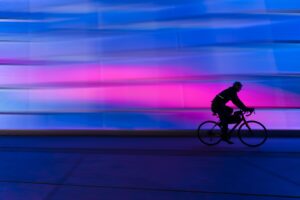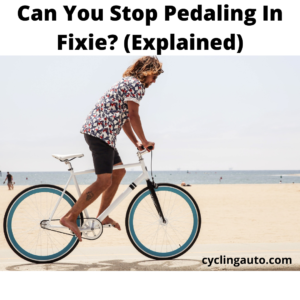When it comes to cycling in the winter seasons most people choose other modes of transportation and some people will ride their fixed gear regardless of what type of weather outside, if you are that type of person you landed in the right place.
Fixed gear bikes are perfect for winter conditions, because of their lightweight, fewer components, low maintenance, and inexpensive price. Fixed gear gives you a direct connection to the drivetrain through pedals, which means you are in full control of the speed of the bike.
There are other factors you have to keep in mind when riding a fixie in the winter season, riding in snow needs some preparation like bike condition, clothes you have to wear, tires of the bike matter, and running breaks on your fixie.
In this article, I will answer everything there is about riding fixed gear on snow, so let’s dive in.
Table of Contents
Is fixed gear a good winter bike?
Riding a fixed-gear bike in the winter can be beneficial for several reasons. For one, fixed gear bikes are lighter than their derailleur counterparts, making them easier to push through the snow.
Fixed gear bikes are known for having low maintenance, for once a couple of months you have to oil the bike and lube the chain except that there isn’t much that needs to be taken care of in a fixie.
Fixed gear makes a perfect bike for the winter season by its low maintenance, and lightweight, you can ride through snow without much problem, riding fixed-gear bikes in the winter season is so much fun that you can’t have from riding any other bike.
Riding fixed gear bikes in the winter season gives you a good workout and a lot of fun at the same time, in the cold season the muscles are not used to working much but when you ride fixed gear you get a full-body workout and keep you healthy.
There is one thing that needs to be taken care of, that is changing your tires to gravel tires, having wider tires gives you a good grip on the snowy roads, and are easy to control, by changing to gravel tires you are less likely to lose the grip of the bike.
What type of tires should you have on the bike?
You can choose tires for your fixie from a wide range of brands, some of which have specific winter tires. Whether you will be using tires for winter or summer depends on several factors including the type of terrain you are going to be riding.
For example, if you are going to be commuting on a dirt trail, you will need to have tires for winter. But if you are looking to ride the trails in the summer, you should opt for grippy tires to avoid a slippery crash.
To put it in simple words, having gravel tires on your fixie gives you a better grip in the winter season, the wider the tire, the better the grip.
I recommend a set of Giant All-Terrain tires. They are inexpensive, fast, and grippy. I’m also a big fan of Felt bicycle tires. They are lighter than the Giant All Terrain, and they have a nice grip on snow.
Tires become the most important part of fixed gear while you are riding on winter roads, changing tires to grip tires is necessary to prevent any minor accidents. Tire is the one that keeps you stuck to the roads, riding on a typical fixie slick tire can cause lots of problems in winter.
What clothes should you wear?
The most common question that arises when you are riding a fixed-gear bike in winter is “What clothes should I wear?”. While there is no exact answer to this question, here are some tips that will help you to keep warm and safe in the winter.
you will need to wear thick clothes, like a jacket and gloves, to protect yourself from the cold.
you should wear a pair of shoes with a good grip on snow. Some brands also make special winter bikes, which have a better grip on snow. wear a coat or a vest, and wear a set of riding pants and gloves.
cycling goggles help you from snowflakes falling in your eyes, you can see clearly without disturbance from snow while riding.
And don’t forget to cover your ears, you are more likely to get cold from open ears, especially when you are riding the wind will be blowing towards your face, so covering your ears is important, if you don’t want to get cold.
What is the best gear ratio to ride on snow?
The gear ratio you should have for your fixie depends on several factors, such as your riding style, the type of terrain you are going to be riding, and the weather.
Generally, a bike with a larger gear ratio is better for riding on snow as it allows you to push the bike faster when you need to. However, if you are a beginner, I recommend that you start with a bike with a smaller gear ratio. This will allow you to learn the basics of how to ride a fixie on snow before you choose to upgrade your bike.
You need to choose the gear ratio that will allow you to have enough power to ride on the snow. If you are not sure what gear ratio to choose.
I recommend that you start with a ratio of 44 to 56 and 15 or more on the cog. This will give you a good balance between power and control, which will allow you to ride on all kinds of terrain. However, if you want to go faster, you can go lower than 44 teeth on the crankset.
The gear ratio is the one that decides if you will like riding your fixie or not in winter if you have a high gear ratio that can slow you down on snow roads if you have a very low gear the chain becomes tight and you might struggle to pedal in snow.
So the only way to know which is the best gear ratio suitable for you is to try out a couple of different gear combinations and choose which you feel comfortable riding in.
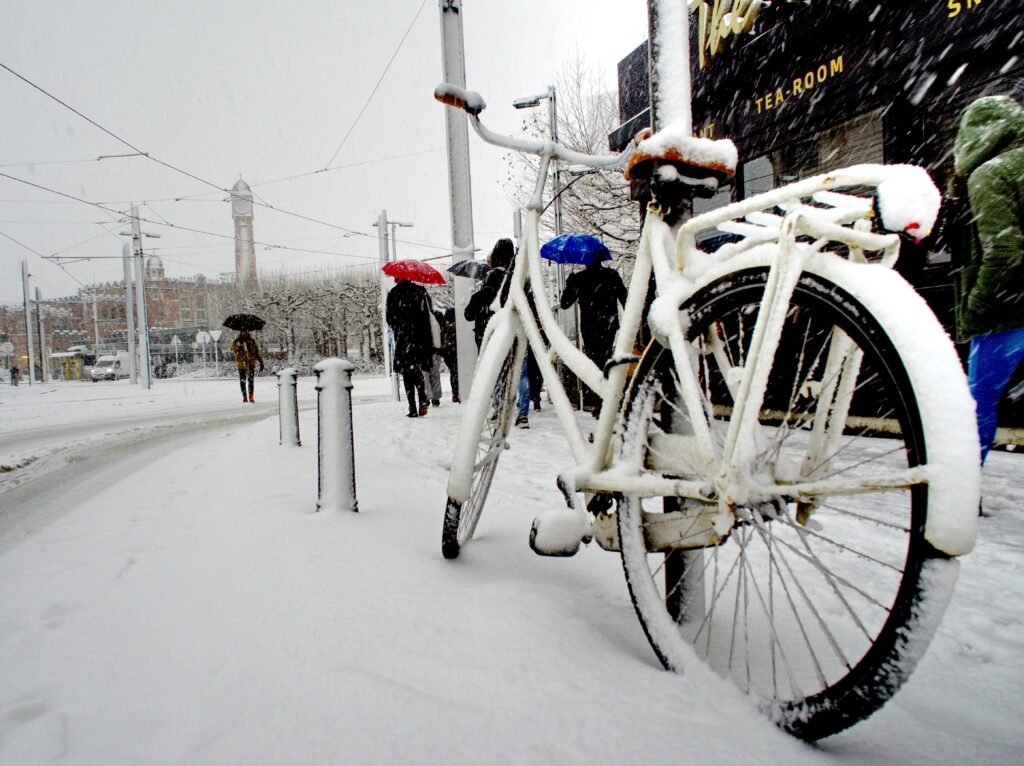
Do you need breaks to ride on winter roads?
Breaks become a very important component of the bike when it comes to riding on winter roads, a typical problem every beginner rider experiences from fixed gear is stopping a bike, it gets even trickier on winter roads as roads are always slippery due to snow.
Yes, brakes are important components of a fixed-gear bike when you are riding in the winter season, by having wide-grip tires and brakes to your fixie can save you from a lot of problems.
Some people ignore the importances of brakes on fixies, even if you are an experienced rider you should have brakes on your bike, because fixed gear is not something that can be stopped immediately, by having brakes you can prevent accidents.
You can either have both front and back brakes, or at least try to have front brakes, it doesn’t matter what type of brakes install on your fixie but the most popular choice of brakes is caliper brakes, or V fixie brakes.
FAQ
How cold is too cold to ride a fixie?
An average cyclist can ride bike on 40 fahrenheit (4.5 C), but riding below 5 fahrenheit (-15 C) and below is not for everyone, it takes a lot of practice and body conditioning, but for normal individuals just don’t bother riding at this temperature.
Does riding fixie in winter burn more calories?
Yes, when your body is in a cold your metabolism will automatically increase, riding for short distances can burn more calories than usual, especially when you are riding a fixed gear it can give you a great workout and burn more calories.
Is riding fixie in snow safe?
Yes, wearing a helmet, shoes, gloves, thick jacket, trousers, and goggles is enough to keep you safe and warm in cold winter riding, when you have brakes installed to your bikes then you will be totally safe.
How many miles can you ride fixie on snow?
It depends on the rider, terrain, and bike they are using, considering you are an average rider you can ride your fixed gear up to 15 to 20 miles or more, but on average you will have no problem covering 20 miles in snow with your fixed gear.
Conclusion
Riding fixed gear in winter is totally possible, in fact fixed gear bikes might be the best bikes to ride in winter due to their fewer components, cheap price, and light weight makes a fixed gear great winter bike.
The problem is with stopping the bike, a majority of cyclists who use fixed gear bikes all have the same stopping problem, so that is why brakes are important and necessary when you’re riding on winter roads, the roads can get very slippery, by having wider gravel tires and brakes you have nothing to worry about.
When you are riding on winter roads you should have proper grip to your fixie, tires become a very crucial part of riding fixed gear, you must change to gravel tires in order to have grip of the bike.
When riding in cold conditions you should wear thick clothes so you don’t catch cold, and make sure to cover your ears, and to pedal the bike without feeling much pressure you should use 44 to 56 tooth on crankset and 15 or more on cog this gear ratio can help you to ride through snow without a problem.
Key takeaways
- Fixed gear bike are perfect for winter riding
- You must change to gravel tires,
- The gear ratio should be between 44 to 56 tooth on crankset and 15 or more on cog
- brakes are compulsory when you are riding in winter roads
- Wear 3 layer of cloths so you don’t catch cold

